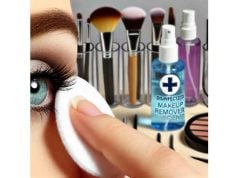Understanding the Role of Lifestyle in Glaucoma Prevention
Glaucoma is often referred to as the “silent thief of sight” because it can gradually steal your vision without warning. By the time symptoms become noticeable, significant and irreversible damage may have already occurred. As one of the leading causes of blindness worldwide, glaucoma poses a serious threat to eye health, particularly as we age. However, the good news is that certain lifestyle changes can significantly reduce your risk of developing this debilitating condition. While genetics and age are uncontrollable factors, proactive steps in daily life can protect your eyes and preserve your vision. The journey to safeguarding your eye health starts with understanding how everyday habits can make a difference.
Key Lifestyle Changes to Lower Glaucoma Risk
1. Regular Eye Examinations: The Foundation of Prevention
One of the most critical steps in preventing glaucoma is ensuring you receive regular comprehensive eye exams. These exams are essential because glaucoma often develops without any noticeable symptoms in its early stages. Regular screenings allow for early detection, which is crucial for preventing vision loss.
- Frequency of Exams: For individuals over the age of 40, it is generally recommended to have a comprehensive eye exam every one to two years. Those with higher risk factors, such as a family history of glaucoma or being of African, Hispanic, or Asian descent, should consult with their eye doctor to determine the appropriate frequency for exams.
- What to Expect: A glaucoma screening typically includes a test to measure the pressure inside your eye (tonometry), an examination of the optic nerve for signs of damage, and a visual field test to check for peripheral vision loss. These tests are non-invasive and can be life-changing in their ability to detect glaucoma early.
Regular eye exams are a simple yet powerful tool in the fight against glaucoma, providing an opportunity to catch the disease early and take steps to manage it before it leads to significant vision loss.
2. Maintaining a Healthy Diet: Nourishing Your Eyes
Diet plays a vital role in overall health, and eye health is no exception. While no specific diet can prevent glaucoma, consuming a diet rich in certain nutrients can support eye health and potentially reduce the risk of glaucoma.
- Antioxidant-Rich Foods: A diet rich in antioxidants, such as vitamins A, C, and E, is essential for maintaining healthy eyes. These vitamins help combat oxidative stress, which can damage the optic nerve and contribute to glaucoma. Incorporating plenty of leafy green vegetables like spinach, kale, and collards, as well as fruits like oranges, berries, and tomatoes, can ensure you’re getting these critical nutrients.
- Omega-3 Fatty Acids: Omega-3 fatty acids, commonly found in fish like salmon, sardines, and tuna, as well as in flaxseeds and walnuts, have anti-inflammatory properties that can support eye health. Some studies suggest that these healthy fats may help reduce intraocular pressure (IOP), a major risk factor for glaucoma.
- Limit Caffeine and Sodium Intake: High caffeine intake has been linked to temporary spikes in intraocular pressure, particularly in those with existing glaucoma. Similarly, a diet high in sodium can contribute to high blood pressure, which may indirectly increase the risk of glaucoma by damaging blood vessels in the eye. Moderation is key—aim to reduce consumption of foods and beverages high in caffeine and sodium to help protect your eyes.
By focusing on a diet rich in eye-healthy nutrients and limiting potentially harmful substances, you can support your eye health and reduce your risk of developing glaucoma.
3. Exercise: The Power of Physical Activity for Eye Health
Regular physical activity is not just good for your body and mind—it’s also beneficial for your eyes. Exercise has been shown to lower intraocular pressure, which is a significant factor in glaucoma development.
- Aerobic Exercise: Engaging in regular aerobic exercise, such as walking, jogging, swimming, or cycling, can help lower intraocular pressure and improve overall blood flow to the optic nerve. Aim for at least 30 minutes of moderate aerobic activity most days of the week.
- Strength Training: While aerobic exercise is particularly beneficial, strength training exercises can also contribute to overall eye health by improving circulation and reducing systemic conditions like hypertension and diabetes, which are linked to an increased risk of glaucoma.
- Exercise Caution: While exercise is beneficial, it’s important to avoid positions that can increase intraocular pressure, such as those involving prolonged head-down positions (e.g., certain yoga poses). Always consult with your doctor before starting a new exercise regimen, especially if you have been diagnosed with glaucoma or are at high risk.
Incorporating regular exercise into your routine is a powerful way to maintain healthy intraocular pressure and support overall eye health, reducing your risk of developing glaucoma.
4. Managing Chronic Conditions: Controlling Blood Pressure and Diabetes
Chronic health conditions like hypertension (high blood pressure) and diabetes can increase your risk of developing glaucoma. By effectively managing these conditions, you can significantly reduce that risk.
- Blood Pressure Management: High blood pressure can damage the blood vessels in the eyes, leading to an increased risk of glaucoma. Regular monitoring and management of blood pressure through medication, diet, and lifestyle changes are crucial. Incorporating relaxation techniques such as deep breathing, meditation, or yoga can also help keep blood pressure in check.
- Diabetes Control: People with diabetes are at a higher risk of developing glaucoma. Keeping blood sugar levels within a healthy range through diet, exercise, and medication is essential for preventing the complications that can lead to glaucoma.
- Medications and Monitoring: If you’re taking medication for any chronic conditions, be aware that some medications can affect intraocular pressure. Regular communication with your healthcare provider about your eye health can ensure that your treatment plan does not inadvertently increase your risk of glaucoma.
By taking control of chronic conditions and working closely with your healthcare providers, you can protect your eye health and lower your risk of developing glaucoma.
Additional Lifestyle Considerations for Glaucoma Prevention
1. Protecting Your Eyes from Injury
Eye injuries can lead to secondary glaucoma, so it’s important to take precautions, especially in environments where eye injuries are more likely.
- Safety Eyewear: Always wear protective eyewear when engaging in activities that pose a risk to your eyes, such as sports, home improvement projects, or working with hazardous materials. Safety goggles or face shields can prevent injuries that could lead to glaucoma.
- Sunglasses: Prolonged exposure to ultraviolet (UV) rays can damage your eyes and increase the risk of developing eye diseases, including glaucoma. Wearing sunglasses with 100% UV protection when outdoors can help shield your eyes from harmful rays.
Taking steps to protect your eyes from injury and harmful UV radiation is a simple yet effective way to prevent conditions that could contribute to glaucoma.
2. Stress Management: Keeping Eye Pressure in Check
Stress can have a significant impact on your overall health, including your eye health. Elevated stress levels have been linked to increased intraocular pressure, which is a major risk factor for glaucoma.
- Relaxation Techniques: Incorporating relaxation practices such as deep breathing, progressive muscle relaxation, or mindfulness meditation into your daily routine can help reduce stress and keep intraocular pressure within a healthy range.
- Sleep Quality: Poor sleep quality or sleep disorders, such as sleep apnea, have been associated with higher intraocular pressure and an increased risk of glaucoma. Ensuring you get adequate, restful sleep each night can contribute to better eye health.
Managing stress and ensuring good sleep hygiene are important aspects of maintaining healthy intraocular pressure and reducing the risk of glaucoma.
3. Avoiding Smoking and Limiting Alcohol Intake
Smoking and excessive alcohol consumption can have detrimental effects on eye health, including increasing the risk of glaucoma.
- Smoking: Smoking damages blood vessels and can contribute to the development of various eye diseases, including glaucoma. Quitting smoking is one of the best steps you can take for your overall health, including your eye health.
- Alcohol Consumption: While moderate alcohol consumption may not pose a significant risk, excessive drinking can lead to fluctuations in intraocular pressure. Limiting alcohol intake to moderate levels (defined as up to one drink per day for women and up to two drinks per day for men) can help protect your eyes.
Making conscious decisions to avoid smoking and moderate alcohol intake can have long-term benefits for your eye health and reduce the risk of glaucoma.











